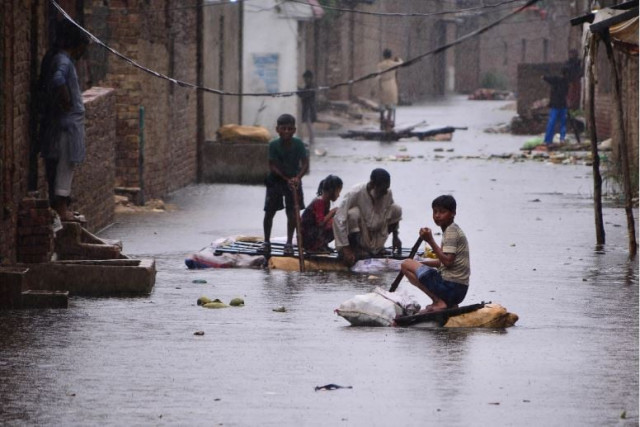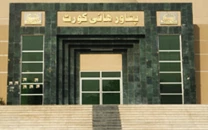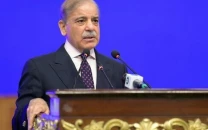Heavy water flow threatens to burst Indus banks
Death toll from unrelenting floods rises to 1,136; NDMA says 33m affected, 1m houses destroyed

Strong flow of water coursing downstream from tributaries in the north on Monday continued to overwhelm the Indus River in Sindh, threatening to burst its banks after inundating millions of acres of rich farmland due to weeks of non-stop rain.
A major relief operation was underway in the country with international aid trickling in as unrelenting floods in several parts of the country continued their killing spree, raising the overall death toll to 1,136 and the national tally of the affected people to 33 million.
Many rivers and tributaries in Khyber-Pakhtunkhwa (K-P) witnessed medium to very high flows reaching lowlands.
The Swat River, which caused massive devastation in the district last week, had recorded a decrease of 41,000 cusecs.
However, 296,731 cusecs of water was passing through the river at Nowshera — which was still a “very high” flow, according to the data available from the flood cell. On Sunday, the water flow at the same point was more than 336,000 cusecs.
A high flow was also reported in the Kabul River at Warsak with 103,614 cusecs and a “medium” flow of 54,495 cusecs at Adezai Bridge.
Local officials said that the water level in the Kabul River would go down further in the next few hours, as the flood proceeded south.
The Water and Power Development Authority (Wapda) said that the country’s largest dam, Tarbela, was releasing its entire inflow of 264,700 cusecs, however, at Mangla, the inflow was 39,400 cusecs and the outflow was 10,000 cusecs.
Similarly, at Chashma, the outflow was 513,300 cusecs against a high inflow of 518,100 cusecs. Wapda said that the inflow in the Chenab River at Marala Headworks was 60,300 cusecs and the discharge was 32,900 cusecs, while inflow in the Kabul River at Nowshera was 318,500 cusecs, which was all being released.
At present, a Wapda spokesperson said, the water storage in Tarbela, Mangla and Chashma reservoirs rose to 9.271 million acre-feet (MAF), including 5.827 MAF in Tarbela and 3.412 MAF in Mangla dams. The water storage at Chashma was 32,000 acre feet, the spokesperson added.
Meanwhile, according to the data released by the National Disaster Management Authority (NDMA), 75 people – 27 children and 17 women — died and 59 others were injured during the last 24 hours, raising the overall death toll from floods to 1,136. The NDMA said that floods destroyed 1.051 million houses.
It said that the number of people affected by the floods had risen to 33.46 million. Giving a breakdown, it said 14.5 million people were affected in 23 districts of Sindh; 9.182 million in 31 districts of Balochistan; 4.844 million in three districts of Punjab; and 4.353 million in nine districts of K-P.
Also, the NDMA report added, 51,500 people were affected in six districts of Gilgit-Baltistan (G-B) and another 53,000 people were affected by floods in Azad Jammu and Kashmir (AJK). It added that 1.051 houses were destroyed, while 8,231 cattle heads perished in the floods.
The country is in the grip of a calamitous flood of epic proportions. This year’s floods are comparable to 2010 – the worst on record—when more than 2,000 people died and nearly one-fifth of the country was under water.
Climate Change Minister Sherry Rehman called it “the monster monsoon of the decade”.
Prime Minister Shehbaz Sharif, who visited Sindh and Balochistan to review the flood situation last week, went to Nowshera and Charsadda and the Mohmand Dam site in K-P on Monday and received briefings on the flood situation there besides meeting flood victims.
During a briefing at the Mardan Bridge, the authorities concerned apprised the prime minister of the ongoing rescue and relief operation as well as other facilities being provided to the displaced people at the relief camps.
At the relief camp, Shehbaz interacted with the people, staying at the shelter camps, and showed affection to the children. He assured them that the government would provide them with all possible facilities at the camps and resolved not to leave them alone in this difficult time.
Later, the prime minister left for Charsadda where he interacted with the flood victims and distributed cheques of cash assistance among them. Talking to the newsmen during the visit, Shehbaz urged philanthropists to arrange food, medicine, clothes or cash for the flood victims.
He said that the flash floods had killed around 242 people in K-P. “This is not the time to do politicking. This is the time to support the distressed people for rehabilitation of their houses,” the prime minister said. He added that he would visit flood-hit Kohistan, Swat and Dir districts.
Later in the day, Shehbaz received a briefing at the Mohmand Dam site. On the occasion, the prime minister stressed the need for shifting the country’s power generation capacity to solar and wind power production systems. He also emphasised the need for timely completion of the hydel power projects.
The prime minister also expressed his serious concerns over the damages caused to dykes and the construction site of the dam in the recent floods but stressed that any delay in the completion time could hamper the country’s progress.
(WITH INPUT FROM AGENCIES)



















COMMENTS
Comments are moderated and generally will be posted if they are on-topic and not abusive.
For more information, please see our Comments FAQ